© ROOT-NATION.com - Use of content is permitted with a backlink.
Decided to buy a laptop stand? And one with active cooling? If you’ve chosen one from GamePro, I don’t blame you, considering their range. In this review, we’ll cover about ten models, including the flagship GamePro CP1450, as well as office-class stands, one of which—the OfficePro LS111—I’ve been using for six months.
The main goal of this review is to show that these stands can essentially save someone’s laptop, while others might not even notice their presence. There are reasons for this, and I recommend making your choice primarily based on these reasons. However, I’ll be the first to acknowledge that cooling is no longer the sole priority for such stands, as they all provide at least adequate and, at best, excellent cooling.
 Video review of GamePro CP1450 and more
Video review of GamePro CP1450 and more

Market positioning
So, the model lineup is as follows: GamePro CP1270 costs $45, GamePro CP870 costs $32, GamePro CP890 is the same, GamePro CP770 is $30, GamePro CP740 is the same, GamePro CP670 costs $25, and GamePro CP485 is $20.
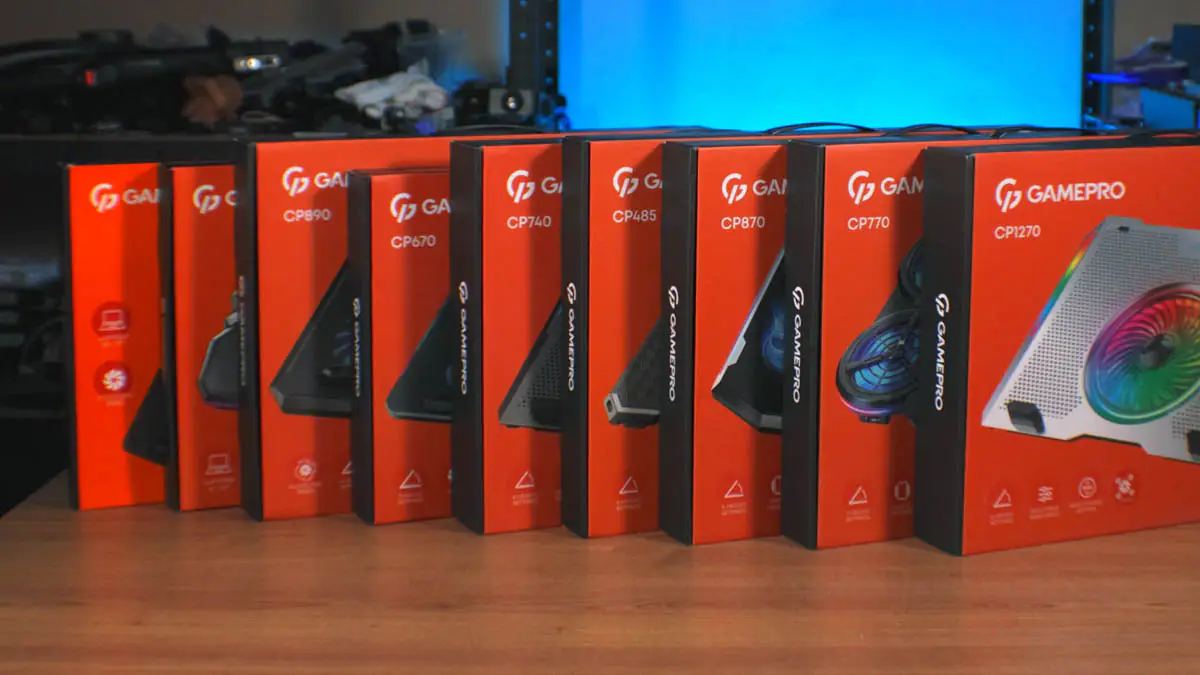
It turns out I also owe reviews for a few more models, including the GamePro CP575 for $20, the GamePro CP980 for $22, the flagship GamePro CP1450 for $50, as well as the OfficePro LS580S for $22 and the OfficePro LS111 for $25.

Read also: GameSir X2 Pro Mobile Gamepad Review
Similarities
The class of laptop stands was born more than 15 years ago. I received my first laptop as a gift along with a cooling stand. It was almost certainly not a GamePro, but you understand—making a reasonably priced cooling stand for a laptop unique is nearly impossible.

It’s always a plastic or metal plate with perforations and anti-slip pads, featuring one or more fans. These fans either push additional air into the ventilation openings or simply blow air over the surface of the laptop. This is how additional cooling occurs.

All models serve as ergonomic stands, tilting the laptop forward at a certain angle, allowing the stand to be used on a desk or in bed. The fans are powered with 99% likelihood via Type-A. Even the cheapest models always have some form of fan speed control.
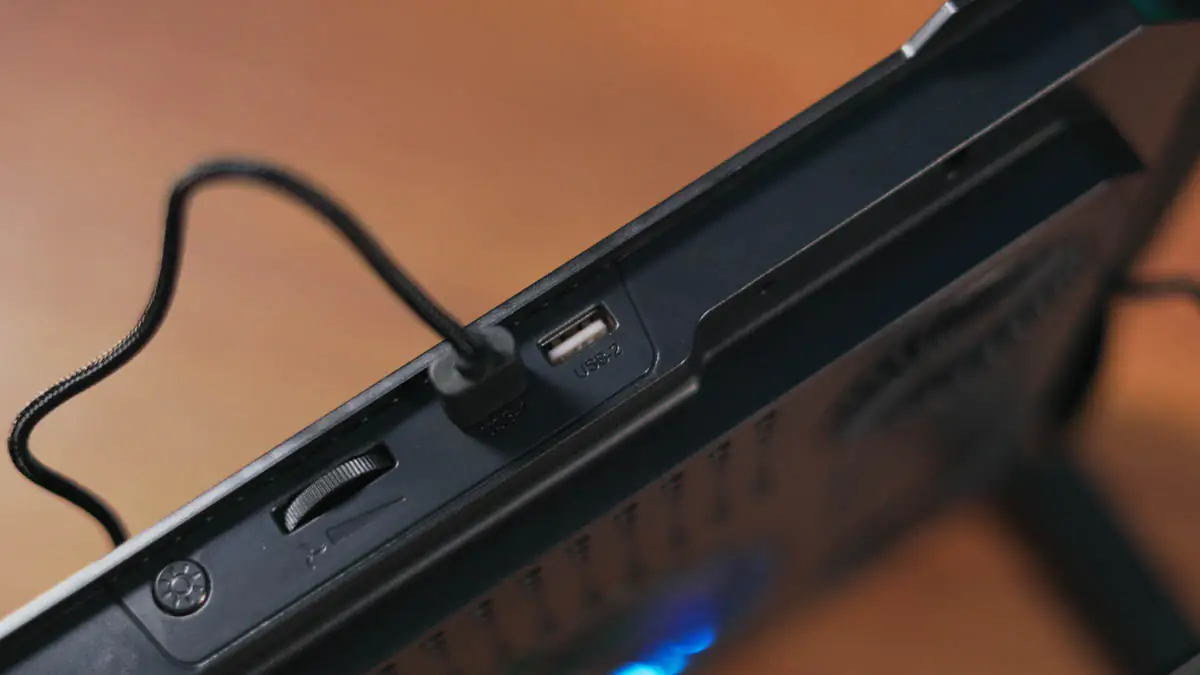
Difference
This is the essence, and it’s the same for all. The price differences are justified primarily by the design, secondly by the quality and number of fans, and thirdly by additional features like displays, RGB lighting, extra controls, and some even have a stand for your smartphone.

Additionally, given the gaming focus, the design of these stands is almost always aggressive. This design is hardly noticeable most of the time, as it is literally covered by the laptop, but you understand—GamePro CP770 is significantly more noticeable than GamePro CP485.

By what? Well, even with the lighting present in all models in one form or another, GamePro CP770 is more noticeable due to its design features, which may include additional accents, sharper lines, or a more pronounced logo. Despite the lighting being present in the fans of almost all models, it’s usually blue, and it only turns off with the fans. In cases where there’s separate RGB, it’s controlled by a button, without brightness adjustment, but it can be turned off. While RGB lighting may not be noticeable during laptop use in most models, if it is, it’s barely noticeable. However, this also depends on the size of the laptop.

The configuration of all models is nearly identical. They all come with a user manual and a Type-A power cable, some of which are braided. The cable is universal, as are the USB ports on all stands. Each stand has two USB units—one for power and the other as a hub to compensate for the occupied port if the stand is powered directly from the laptop.
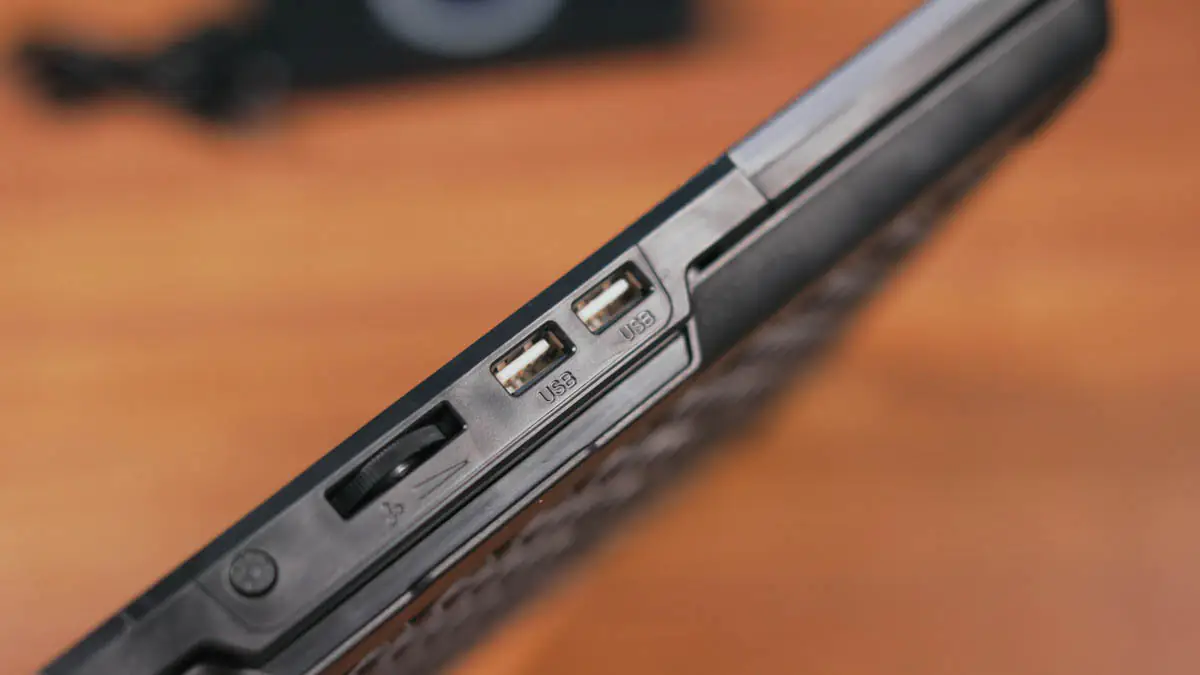
Yes, USB Type-A 2.0 is extremely unpopular at the moment because of the existence of Type-C, but finding a replacement will be easy. A quick Google search found me a meter-long cable, and they cost just pennies.

The build quality of the stands varies from model to model. In some, there were issues with functionality, but the majority were assembled reliably and with good quality. The majority have metal where metal should be, such as metal perforation where it comes into contact with the laptop, which in itself provides a minimal bonus. However, since this bonus is minimal, there are no complaints where it’s absent.

The dimensions of the stands depend on the maximum diagonal size of the laptop that the stand accommodates. For example, the GamePro CP970 turned out to be slightly larger than my gaming flagship. This is also logical – there is no need for them to be ultra-compact because they offer maximum quality cooling for their price.

You can even power them with the cheapest modern power bank, 5V / 1A. Since the speed is adjustable in all stands, at maximum consumption, slightly more than 5W is consumed, and at minimum, slightly less than 5W.

Read also: Review of Lenovo Legion Go: Portable Gaming Console-Transformer
Specifics
Regarding the details, I’ll note the most unique ones. The stands with the largest fans turned out to be the least noisy – namely, the GamePro CP1270 and GamePro CP740. Models like the GamePro CP670, GamePro CP770, GamePro CP870, and GamePro CP1450 have a separate LED display with backlighting, which controls both the fan speed and RGB.

The smartphone holder is available in the GamePro CP670, GamePro CP770, GamePro CP870, GamePro CP1450, and GamePro CP980 models. The latter is also interesting because removing the laptop support is VERY difficult. I couldn’t manage to do it with just my fingers or nails.

Special attention should be paid to the GamePro CP575 and GamePro CP1450 models. The first one, GamePro CP575, is one of the oldest in the company’s product line. It stands out with the most aggressive design among all models and has fewer features.

The CP1450 stands out with its flagship price, powered not by USB but by DC 5V through an included adapter. It features a metal plate in the center, which remains cool to the touch, making it potentially the most effective option in certain situations discussed in the following paragraph.

Ultrabooks
Why did I say from the very beginning that these stands will either save your laptop or their benefits will be minimal? It’s because the positioning of these devices is a bit outdated. Not the design. The positioning. Earlier, gaming laptops were large, they had inefficient and noisy fans that couldn’t cope with the hardware inside, even though it was not only excessively hot but sometimes ten times less powerful than desktop models.

Since laptops often took in air from the bottom and blew it out from the sides, such a stand was invented to push air to the fans faster, providing more airflow to the components inside. Because even a relatively cheap 140-mm fan would be more effective than two fans inside an old laptop.

I specifically note devices like the Apple MacBook with passive cooling. We tested it on the GamePro CP1270 and GamePro CP670 at maximum fan speeds and achieved a 4% increase in Cinebench scores over a 10-minute render. More significant gains are possible because the M1 MacBook Air heats up more at the top than at the bottom, and there are modifications that make cooling more efficient through thermal pads.

Plus, if your laptop is old and, for example, the thermal paste has dried up, the additional airflow can actually help. This was the case with my colleague’s MacBook Pro from 2019, where overheating prevented it from working at all. Again, replacing the thermal paste is not that difficult, but it’s easier to buy a cooling pad, and you don’t have to be out of commission because your laptop is in the shop.

Gaming laptops
With gaming laptops, the situation is similar. My ASUS ROG Scar 15 G533QS, which serves as my desktop replacement, at best, with the GamePro CP1270, saw a decrease of -5 degrees on the processor and graphics card in Battlefield 2042. However, this was compared between the laptop sitting on the desk, with active fans at 3900 RPM, and the laptop on the stand, which was running at full speed.

And sometimes, it happened that the laptop on the desk scored higher, let’s say in PCMark, than with the stand. Why is that? Because properly functioning laptops don’t change fan speed gradient-wise, only step by step. For my laptop to increase fan speed by 100 RPM, for example, it needs a change of 4 degrees, let’s say. Otherwise, the fans would constantly fluctuate in speed, which isn’t very good for their longevity.

And when there’s a jump of 100 RPM, the laptop gets cooling by a hypothetical 4 degrees and immediately compensates for them, let’s say, by increasing the frequency by 200 MHz. So, the processor and graphics card still heat up to 90 degrees, but the system starts working faster.

In newer laptops, this works more gradually, but in older ones, it’s often more rough and aggressive. Overheating can lead to frequency drops to the point where the laptop physically starts to slow down. Like the MacBook Pro 2019.
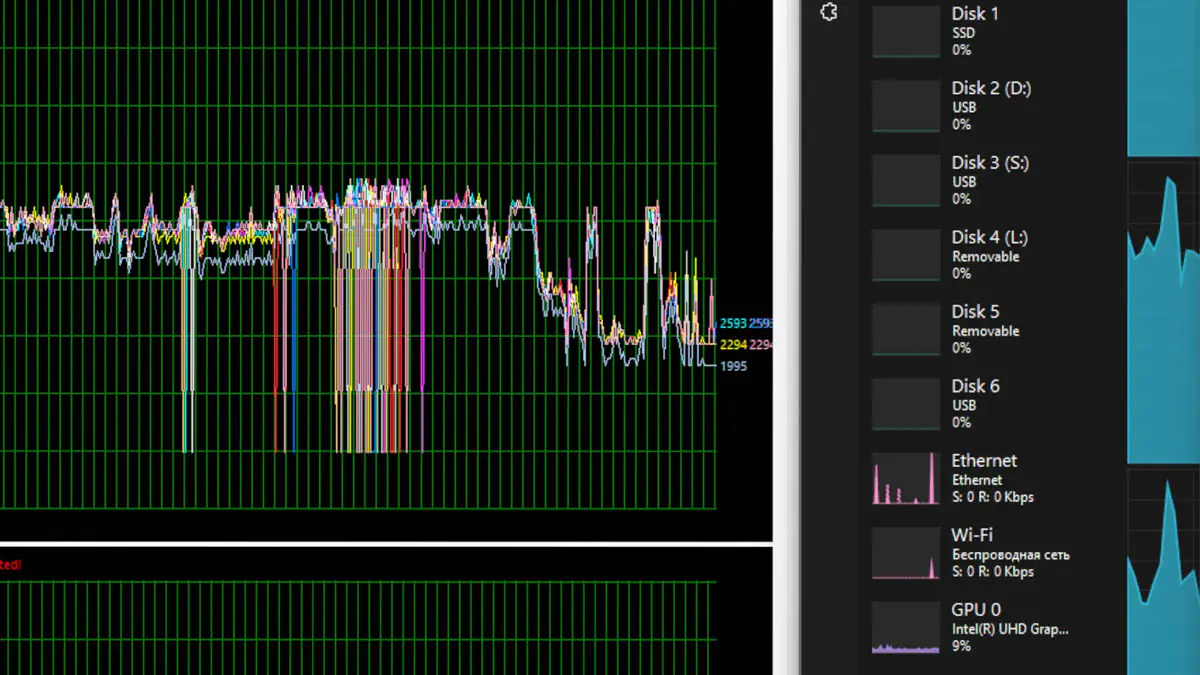
The stand will also save your laptop’s fans because it will be easier for it to cool down components during light work, and there will be fewer reasons to activate its own fans at full power.
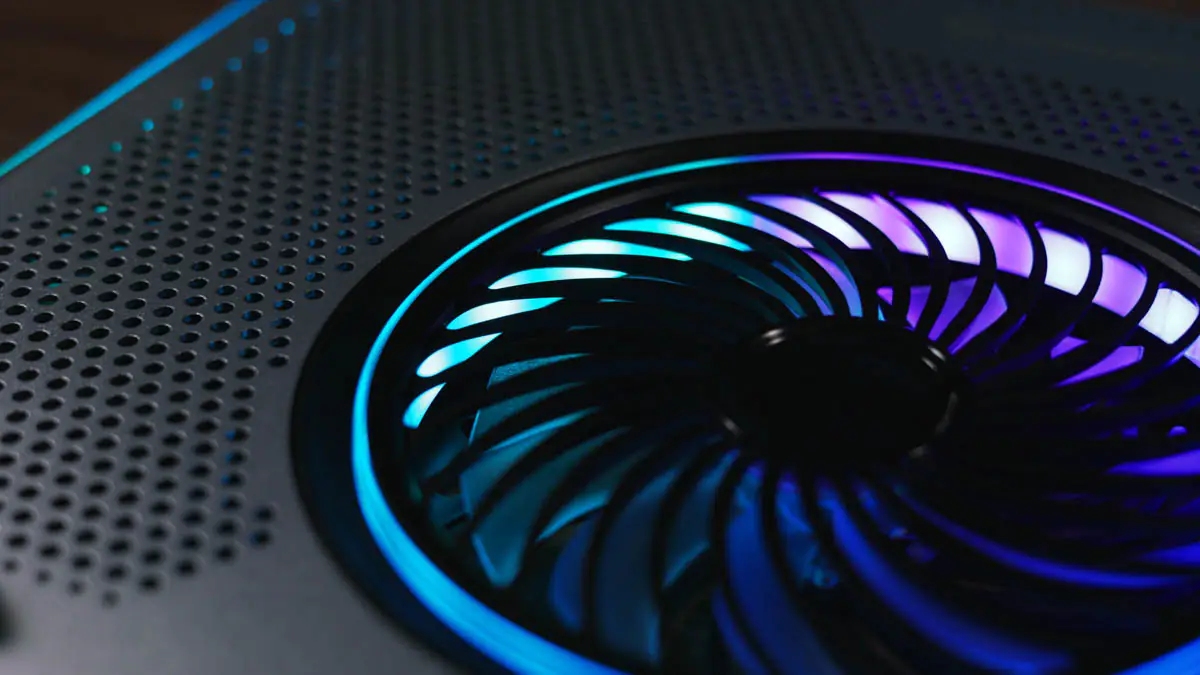
You can even leave the fan on the stand running continuously, even at minimum speeds. If it wears out after a year or so, you can buy a new stand. But agree – it’s better to replace the stand than to change the laptop’s fans in a service center.

So, if you have, for example, an ASUS ROG Scar 15, which theoretically can dissipate around 200 watts of thermal energy, then a stand like the GamePro CP1270 won’t save you from throttling. But it will slightly delay the process, slightly increase overall temperatures, and add a lot of RGB to your life.

Certainly, the fans in these stands aren’t made with the same quality as those in laptops, but if your device is noisy during light work – what’s the difference whether it’s noisy itself or the stand is noisy? Especially in games. Oh, and the large fans in expensive models like the GamePro CP1270 are much more pleasant-sounding than the tiny laptop ones.
It would seem that we are summarizing the results here. But I haven’t mentioned something, have I?
Read also: Lenovo Yoga Book 9i Review: Laptop-transformer with two displays
OfficePro LS111, LS580S and LS320G
About OfficePro. Because I received several GamePro and OfficePro models for review simultaneously. But I’ve been using the OfficePro LS111 model almost every day for nearly six months. Unlike the gaming models. Why? Because gaming models don’t offer what OfficePro does. Namely – ergonomics.

My ASUS ROG Scar 15, for which I thank the AnyMac store, is a desktop replacement. It has a 16GB graphics card, Ryzen 9 processor, soon to be upgraded to 64GB RAM – for which I thank Goodram, two 2TB SSDs, and I always have a mouse and keyboard connected. And thanks to the OfficePro LS111 stand, the laptop is raised above the keyboard and doesn’t interfere with typing or gaming. Essentially, I sit as if I were in front of a monitor, and when I have headphones on, I don’t even notice the fan noise.

From the very beginning, I wanted the OfficePro LS580S model because I wanted a compact workstation with a large monitor, as I got used to the convenience of the 49-inch Philips Brilliance. But I decided to stick with the LS111 and not use monitors for a quite practical reason.

All my hardware, which is currently my source of income, should always be with me because I have no other means to support myself and my family. So, in reality, for personal work, I’d rather take a hybrid reality headset than a widescreen monitor. Simply because the headset, unlike a 49-inch monitor, can even fit into a small package.

So yes, thanks to the OfficePro LS111, I feel much calmer working. I’ve adapted to the 15-inch screen, work quickly, efficiently, and it’s very convenient for me. And it’s not even as scary to have liquids around my workspace anymore – let’s say, tea, because if it spills, it’ll splash onto the USB keyboard, not the $2000 laptop casing.

However, transporting this stand is still problematic. And here the OfficePro LS320G comes into play.

Essentially, it’s a stand with an incline, without active cooling, but with the ability to take it with you in your pocket. And you still get a more convenient workspace, while your laptop gets access to fresh air. And it costs next to nothing.

P.S. For more secure attachment of the laptop at high angles, I recommend using a clamp on the side. I found a clamp for a photo backdrop suitable for me, but you may need to adjust the laptop sideways for a better grip.

Summary
If I’m honest, I started this review with a significantly less positive attitude towards laptop stands. Because, once again, you expect them to provide maximum efficiency in terms of cooling. But whether it’s the GamePro CP1270, the GamePro CP485, or the GamePro CP1450, they offer additional advantages as well. Their positioning and design are frankly hindered by their functionality, but hey, that’s just how the game goes.

As for office stands, the OfficePro LS111 will be under each of my laptops as long as I have them. So, yeah, I recommend both.
Read also:
- Motorola Edge 50 Pro Review: Best in Segment
- ASUS ROG Carnyx Gaming Microphone Review
- ASUS ZenBeam L2 Portable Projector Review

